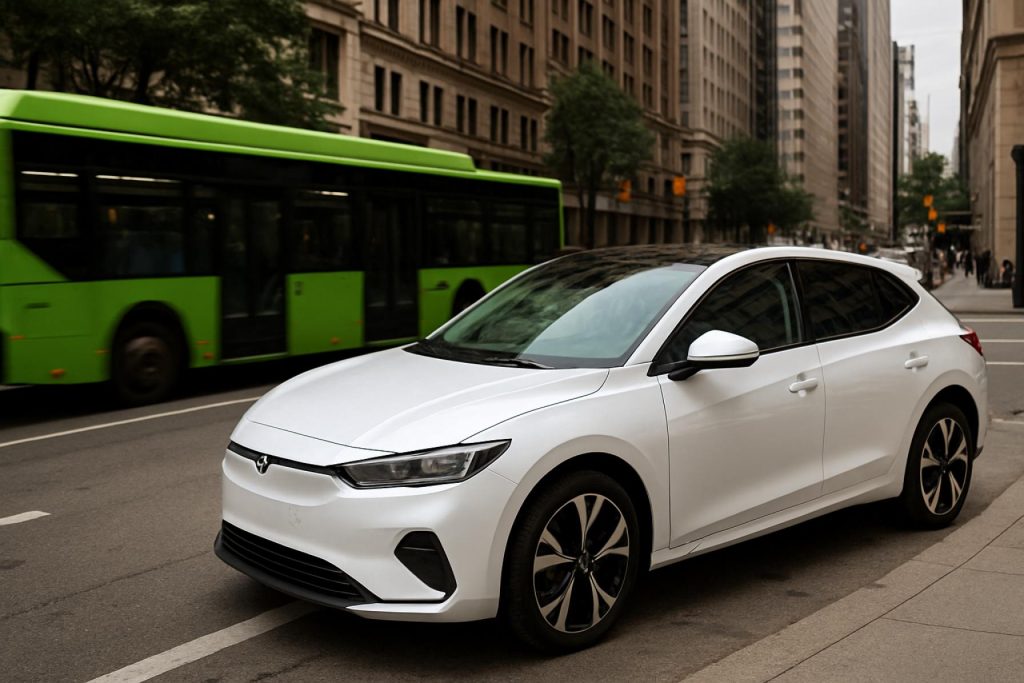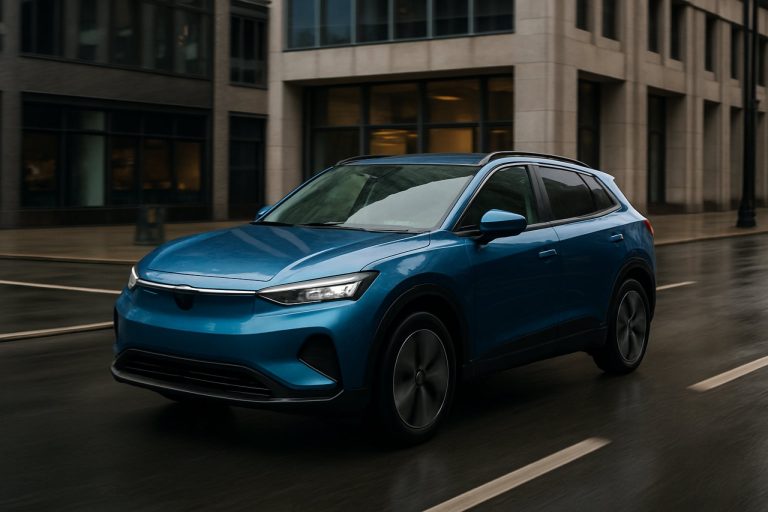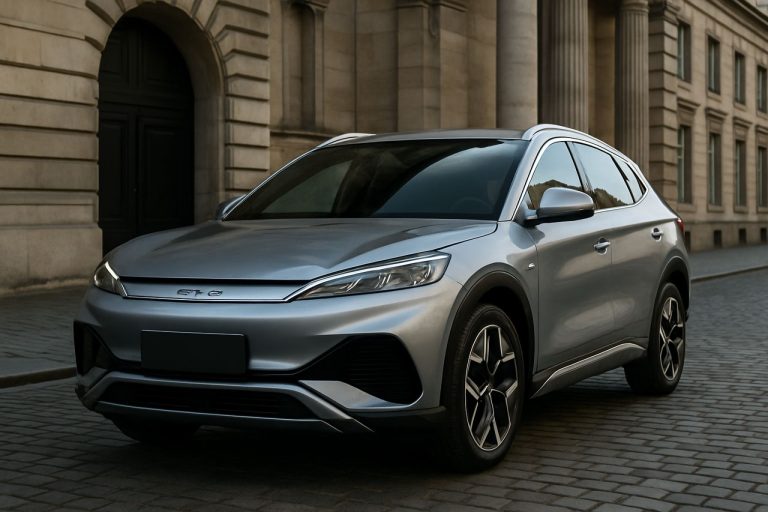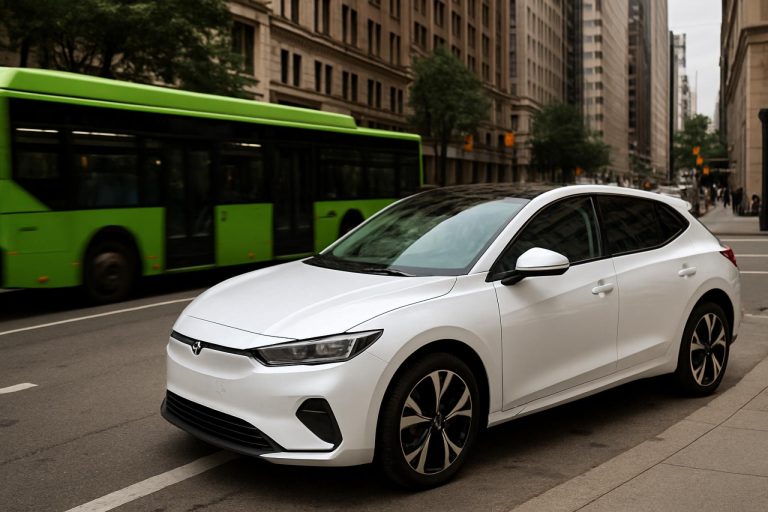
How EV Mobility-as-a-Service Is Transforming Urban Mobility in 2025: Market Growth, Technology Shifts, and the Road Ahead. Discover the Key Drivers and Challenges Shaping the Next Era of Sustainable Transport.
- Executive Summary: The State of EV MaaS in 2025
- Market Size, Growth, and Forecasts (2025–2030)
- Key Players and Strategic Partnerships
- Technology Innovations: Platforms, Vehicles, and Charging
- Business Models: Subscription, Pay-Per-Use, and Beyond
- Urban Integration and Smart City Synergies
- Regulatory Landscape and Policy Drivers
- User Adoption Trends and Customer Experience
- Sustainability Impact and Emissions Reduction
- Future Outlook: Opportunities, Risks, and Market Scenarios
- Sources & References
Executive Summary: The State of EV MaaS in 2025
In 2025, the landscape of Electric Vehicle Mobility-as-a-Service (EV MaaS) is rapidly evolving, driven by urbanization, environmental policy, and technological innovation. EV MaaS integrates electric vehicles into shared mobility platforms, offering users flexible, on-demand transportation while supporting global decarbonization goals. The sector is characterized by the convergence of automotive manufacturers, technology firms, and mobility operators, each contributing to a dynamic ecosystem.
Major automotive OEMs have expanded their roles beyond manufacturing, investing heavily in MaaS platforms and EV fleets. Volkswagen AG continues to scale its MOIA ride-pooling service, which operates a fully electric fleet in European cities, aiming to reduce urban congestion and emissions. Toyota Motor Corporation has advanced its KINTO mobility brand, offering EV-based car-sharing and subscription services in multiple global markets. Meanwhile, BMW Group and Mercedes-Benz Group AG have consolidated their mobility services under the joint venture SHARE NOW, which is transitioning its fleet to electric vehicles across major European cities.
Technology-driven mobility providers are also central to the sector’s growth. Uber Technologies Inc. has committed to becoming a zero-emission platform in key markets by 2030, with significant investments in EV integration and driver incentives. Lyft Inc. is similarly expanding its EV offerings, aiming for 100% electric rides on its platform in North America by 2030. In Asia, DiDi Global Inc. operates one of the world’s largest EV ride-hailing fleets, supported by partnerships with local automakers and battery suppliers.
The EV MaaS sector is further enabled by advancements in charging infrastructure and digital platforms. Tesla, Inc. continues to expand its Supercharger network, supporting both its own and third-party EV fleets. ChargePoint Holdings, Inc. and BP p.l.c. (through BP Pulse) are deploying high-speed charging hubs tailored for shared mobility operators, addressing range anxiety and operational downtime.
Looking ahead, the outlook for EV MaaS is robust. Regulatory mandates in the EU, China, and North America are accelerating fleet electrification and low-emission zones, while consumer demand for sustainable, flexible mobility continues to rise. By 2027, industry analysts expect EVs to comprise a significant share of shared mobility fleets, with further integration of autonomous driving technologies on the horizon. The sector’s trajectory will depend on continued collaboration between automakers, technology providers, and urban policymakers, ensuring that EV MaaS delivers on its promise of cleaner, more efficient urban mobility.
Market Size, Growth, and Forecasts (2025–2030)
The global market for Electric Vehicle (EV) Mobility-as-a-Service (MaaS) is entering a phase of accelerated growth as urbanization, environmental regulations, and digitalization converge to reshape transportation. In 2025, the sector is characterized by rapid expansion in both established and emerging markets, driven by increasing consumer demand for sustainable, flexible, and cost-effective mobility solutions. Key players in this space include automakers, technology firms, and mobility operators, each leveraging their strengths to capture market share.
Major automotive manufacturers such as BMW Group and Mercedes-Benz Group (formerly Daimler AG) have invested heavily in EV-based MaaS platforms, including car-sharing and ride-hailing services. Their joint venture, previously known as SHARE NOW, has expanded its all-electric fleet in several European cities, reflecting a broader industry trend toward electrification of shared mobility. Similarly, Tesla, Inc. continues to develop its own ride-hailing network, leveraging its extensive EV fleet and autonomous driving technology roadmap.
In Asia, Toyota Motor Corporation has advanced its KINTO mobility brand, offering EV subscription and car-sharing services in Japan and select international markets. Meanwhile, DiDi Global Inc. operates one of the world’s largest EV ride-hailing fleets in China, with ongoing plans to expand its MaaS offerings and charging infrastructure.
The market size for EV MaaS is projected to grow at a double-digit compound annual growth rate (CAGR) through 2030, with urban centers in Europe, North America, and Asia-Pacific leading adoption. The European Union’s Fit for 55 package and similar regulatory frameworks in the United States and China are accelerating the shift to zero-emission mobility, incentivizing both operators and consumers to adopt EV-based MaaS solutions. By 2030, the number of EVs deployed in shared mobility services is expected to multiply several-fold compared to 2025 levels, with major cities targeting significant reductions in internal combustion engine vehicles.
- BMW Group and Mercedes-Benz Group: Expanding all-electric car-sharing fleets in Europe.
- Tesla, Inc.: Developing autonomous EV ride-hailing network.
- Toyota Motor Corporation: Scaling KINTO EV subscription and sharing services.
- DiDi Global Inc.: Operating and expanding EV ride-hailing in China and beyond.
Looking ahead, the EV MaaS market is poised for robust growth, underpinned by technological innovation, supportive policy environments, and evolving consumer preferences. Strategic partnerships between automakers, tech companies, and urban authorities will be crucial in scaling infrastructure and ensuring seamless, sustainable mobility experiences through 2030.
Key Players and Strategic Partnerships
The EV Mobility-as-a-Service (MaaS) sector is rapidly evolving, with established automakers, technology firms, and mobility startups forming strategic alliances to accelerate the adoption of electric vehicles in shared mobility platforms. As of 2025, the competitive landscape is shaped by a mix of global automotive giants, ride-hailing leaders, and innovative new entrants, all leveraging partnerships to expand their reach and capabilities.
One of the most prominent players is Tesla, Inc., which continues to integrate its electric vehicles into ride-hailing and car-sharing networks, particularly through its proprietary Tesla Network platform. Tesla’s approach combines its vertically integrated manufacturing with software-driven fleet management, aiming to offer autonomous EV MaaS in select markets. Meanwhile, Volkswagen AG has expanded its MOIA subsidiary, focusing on all-electric ride-pooling services in European cities, and is actively collaborating with municipal authorities to integrate MaaS solutions into public transport systems.
In Asia, Toyota Motor Corporation has deepened its investment in MaaS through its KINTO brand, offering flexible EV subscriptions and partnerships with local mobility providers. Toyota’s alliances with ride-hailing companies and city governments are central to its strategy of embedding electrified mobility into urban ecosystems. Similarly, DiDi Global Inc. operates one of the world’s largest EV ride-hailing fleets, supported by joint ventures with automakers and battery suppliers to scale up EV adoption and charging infrastructure.
Technology companies are also pivotal. Uber Technologies, Inc. has committed to transitioning its platform to zero-emission vehicles in major cities by 2030, partnering with automakers like Nissan Motor Co., Ltd. and Honda Motor Co., Ltd. to provide drivers with access to affordable EVs. Uber’s collaborations extend to charging network operators and financial institutions to lower barriers for driver EV adoption. Lyft, Inc. is pursuing a similar path, with strategic agreements to electrify its fleet and integrate EVs into its rental and subscription offerings.
- Automaker alliances: Companies like BMW Group and Mercedes-Benz Group AG (formerly Daimler) have merged their mobility services, such as car2go and DriveNow, into the joint venture SHARE NOW, focusing on EV-based car sharing across Europe.
- Charging infrastructure partnerships: Key players are collaborating with charging network providers such as IONITY (a joint venture of major automakers) to ensure seamless access to fast charging for MaaS fleets.
- Public-private initiatives: Municipalities and transit agencies are increasingly partnering with MaaS operators to integrate EVs into multimodal transport platforms, as seen in pilot projects across Europe and Asia.
Looking ahead, the next few years are expected to see intensified collaboration between automakers, technology firms, and public sector stakeholders. These partnerships will be crucial for scaling EV MaaS platforms, optimizing fleet operations, and achieving sustainability targets in urban mobility.
Technology Innovations: Platforms, Vehicles, and Charging
The landscape of EV Mobility-as-a-Service (MaaS) is rapidly evolving in 2025, driven by technological innovations across digital platforms, vehicle fleets, and charging infrastructure. MaaS integrates various forms of electric mobility—such as ride-hailing, car-sharing, e-scooters, and public transit—into unified digital platforms, enabling seamless, on-demand transportation experiences for users.
Leading automotive manufacturers and technology companies are at the forefront of this transformation. Tesla, Inc. continues to expand its Full Self-Driving (FSD) capabilities, aiming to enable autonomous ride-hailing services that could be integrated into MaaS platforms. Meanwhile, BMW Group and Mercedes-Benz Group AG are investing in their own digital mobility services, such as SHARE NOW and Free Now, which offer electric vehicle sharing and multimodal trip planning.
In Asia, Toyota Motor Corporation is advancing its KINTO MaaS platform, which bundles EV leasing, car-sharing, and subscription services. Toyota’s focus on integrating battery electric vehicles (BEVs) and hydrogen fuel cell vehicles into KINTO reflects a broader industry trend toward diversified, sustainable fleets. Similarly, Nissan Motor Corporation is piloting EV-based ride-hailing and car-sharing services in Japan and Europe, leveraging its LEAF and Ariya models.
Platform technology is central to MaaS innovation. Companies like Uber Technologies, Inc. and Lyft, Inc. are expanding their EV offerings, with Uber committing to become a zero-emission platform in major cities by 2030. Both companies are integrating real-time charging data, route optimization, and multimodal trip planning into their apps, enhancing the user experience and operational efficiency.
Charging infrastructure is a critical enabler for EV MaaS. IONITY GmbH, a joint venture of major automakers, is rapidly expanding its high-power charging network across Europe, supporting the viability of long-distance EV mobility services. ChargePoint Holdings, Inc. and EVgo, Inc. are deploying interoperable charging solutions and APIs that allow MaaS platforms to provide real-time charger availability and reservation features.
Looking ahead, the convergence of autonomous driving, connected vehicle technology, and advanced charging solutions is expected to accelerate the adoption of EV MaaS. Industry collaborations, open data standards, and government incentives will further drive integration and scalability, positioning EV MaaS as a cornerstone of sustainable urban mobility in the coming years.
Business Models: Subscription, Pay-Per-Use, and Beyond
The business models underpinning Electric Vehicle (EV) Mobility-as-a-Service (MaaS) are rapidly evolving as the sector matures in 2025. The most prominent models include subscription-based services, pay-per-use (or pay-as-you-go), and emerging hybrid approaches that blend flexibility with cost efficiency. These models are being shaped by advances in digital platforms, changing consumer preferences, and the growing imperative for sustainable urban mobility.
Subscription-based EV MaaS platforms offer users access to a fleet of electric vehicles for a fixed monthly fee, often including insurance, maintenance, and charging. This model is exemplified by companies like Volvo Cars, whose “Care by Volvo” program provides flexible EV subscriptions, and Hertz, which has expanded its EV rental and subscription offerings globally. These services appeal to urban professionals and businesses seeking predictable costs and hassle-free mobility, and are increasingly being integrated with multimodal MaaS apps.
The pay-per-use model, meanwhile, remains a cornerstone of urban EV mobility, particularly in car-sharing and ride-hailing. Companies such as SHARE NOW (a joint venture of BMW and Mercedes-Benz) and Uber Technologies have expanded their EV fleets, allowing users to pay only for the time or distance traveled. This model is attractive for occasional users and tourists, and is being enhanced by real-time vehicle availability, seamless digital payments, and integration with public transit.
Beyond these established models, 2025 is witnessing the rise of hybrid and value-added approaches. For example, Renault Group is piloting flexible plans that combine subscription and pay-per-use elements, catering to both regular commuters and sporadic users. Additionally, some MaaS providers are bundling EV access with public transport, micromobility (e-scooters, bikes), and even energy services, creating all-in-one mobility packages. Mobility Cooperative in Switzerland, for instance, offers integrated EV car-sharing with public transport passes, reflecting a trend toward seamless, multimodal journeys.
- Subscription models are expected to grow as automakers and rental companies seek recurring revenue and customer loyalty.
- Pay-per-use will remain vital in dense urban areas, especially as cities implement low-emission zones and restrict private car ownership.
- Hybrid and bundled offerings are likely to proliferate, driven by partnerships between automakers, tech firms, and transit agencies.
Looking ahead, the convergence of digital platforms, data analytics, and electrification is set to further diversify EV MaaS business models. As user expectations shift toward flexibility, convenience, and sustainability, providers will continue to experiment with new pricing structures and service bundles, shaping the future of urban mobility.
Urban Integration and Smart City Synergies
The integration of Electric Vehicle (EV) Mobility-as-a-Service (MaaS) into urban environments is accelerating in 2025, driven by the convergence of electrification, digital platforms, and smart city initiatives. Cities worldwide are leveraging EV MaaS to address congestion, reduce emissions, and enhance urban mobility, aligning with broader sustainability and digitalization goals.
A key trend is the deployment of multimodal MaaS platforms that seamlessly connect EV ride-hailing, car-sharing, e-scooters, and public transit. Major automakers and technology providers are at the forefront. BMW Group and Mercedes-Benz Group have expanded their joint venture, SHARE NOW, offering all-electric car-sharing fleets in over 15 European cities. Similarly, Volkswagen AG’s WeShare service operates a fully electric fleet in Berlin and Hamburg, integrating with public transport ticketing and city mobility apps.
In Asia, Toyota Motor Corporation is piloting its KINTO MaaS platform in Tokyo and other major cities, combining EV car-sharing, subscription services, and integration with urban transit. Grab Holdings, Southeast Asia’s leading mobility platform, is scaling up its EV ride-hailing and e-scooter services, supported by partnerships with local governments and charging infrastructure providers.
Urban integration is further enabled by smart city infrastructure. Cities such as Amsterdam and Singapore are deploying intelligent charging networks, real-time data sharing, and digital payment systems to support EV MaaS. ABB Ltd and Siemens AG are supplying fast-charging solutions and grid management technologies, ensuring that EV fleets can be efficiently charged and dispatched in dense urban areas.
Data from UITP (International Association of Public Transport) indicates that by 2025, over 30% of new urban mobility services in Europe and Asia will be electrified and integrated into MaaS platforms. The outlook for the next few years points to rapid expansion, with cities incentivizing zero-emission fleets and digital mobility solutions through policy, subsidies, and public-private partnerships.
Looking ahead, the synergy between EV MaaS and smart city ecosystems is expected to deepen. Advancements in AI-driven route optimization, interoperability standards, and user-centric digital interfaces will further enhance the efficiency and appeal of EV MaaS. As urban populations grow and climate targets tighten, EV MaaS is poised to become a cornerstone of sustainable, connected urban mobility.
Regulatory Landscape and Policy Drivers
The regulatory landscape for Electric Vehicle (EV) Mobility-as-a-Service (MaaS) is rapidly evolving in 2025, driven by ambitious climate targets, urban air quality mandates, and the need for integrated, sustainable transport solutions. Governments and regulatory bodies worldwide are enacting policies to accelerate the adoption of EVs within shared mobility platforms, such as ride-hailing, car-sharing, and micro-mobility services.
In the European Union, the European Union continues to implement its “Fit for 55” package, which mandates a 55% reduction in CO2 emissions from cars by 2030. This has led to stricter emissions standards for urban fleets and incentives for MaaS operators to electrify their vehicles. Several EU cities, including Paris and Amsterdam, are enforcing low-emission zones and setting deadlines for the full electrification of ride-hailing and taxi fleets by 2025–2030. These measures are compelling MaaS providers to accelerate EV integration and collaborate with local authorities on charging infrastructure and data sharing.
In the United States, the U.S. Environmental Protection Agency and the Department of Transportation are supporting state and municipal initiatives to electrify public and shared mobility. The Bipartisan Infrastructure Law and Inflation Reduction Act provide funding for EV charging networks and offer tax credits for commercial EVs, directly benefiting MaaS operators. Cities like New York and Los Angeles have announced requirements for ride-hailing fleets to transition to zero-emission vehicles by 2030, with pilot programs already underway in 2025.
China, the world’s largest EV market, continues to lead in regulatory support for electric MaaS. The Ministry of Industry and Information Technology and local governments are mandating higher EV adoption rates for ride-hailing platforms and providing subsidies for both vehicles and charging infrastructure. Major cities such as Shenzhen and Shanghai require a significant percentage of new ride-hailing vehicles to be electric, with compliance monitored through digital platforms.
Industry bodies such as the European Automobile Manufacturers’ Association and SAE International are working with regulators to develop standards for interoperability, data privacy, and safety in EV MaaS ecosystems. These collaborations aim to ensure seamless integration of EVs into multimodal transport networks and to address challenges such as charging access, grid impact, and user experience.
Looking ahead, regulatory momentum is expected to intensify through 2025 and beyond, with more cities and countries setting binding targets for zero-emission shared mobility. MaaS operators will need to navigate a complex web of local and national regulations, but supportive policies and public investment are likely to accelerate the transition to electric, integrated mobility services worldwide.
User Adoption Trends and Customer Experience
The adoption of Electric Vehicle (EV) Mobility-as-a-Service (MaaS) is accelerating in 2025, driven by urbanization, environmental policies, and evolving consumer preferences. MaaS platforms integrate various transport modes—ride-hailing, car-sharing, e-scooters, and public transit—into unified digital services, with EVs increasingly at the core. This shift is evident in the strategies of major mobility providers and automakers, who are investing heavily in electrified fleets and digital platforms to enhance user experience.
Key players such as Uber Technologies Inc. and Lyft, Inc. have committed to transitioning their ride-hailing fleets to electric vehicles, with Uber aiming for 100% zero-emission rides in the US, Canada, and Europe by 2030. In 2025, both companies are expanding EV-specific offerings, incentivizing drivers to switch to electric models through partnerships with automakers and charging infrastructure providers. Uber Technologies Inc. reports a significant increase in EV trips, with millions of zero-emission rides completed in major cities.
Automakers are also entering the MaaS space directly. BMW Group and Mercedes-Benz Group AG (formerly Daimler AG) have merged their mobility services under the joint venture “YOUR NOW,” offering electric car-sharing and ride-hailing in European cities. Toyota Motor Corporation is piloting EV-based MaaS platforms in Asia, integrating connected vehicle technology to optimize fleet management and user experience.
User adoption is influenced by improvements in digital interfaces, real-time vehicle availability, and seamless payment systems. MaaS apps now offer personalized route planning, dynamic pricing, and integration with public transit, making EV-based mobility more attractive. According to Volkswagen AG, its “WeShare” all-electric car-sharing service in Berlin and Hamburg has seen steady growth in active users, with customer satisfaction linked to vehicle cleanliness, charging convenience, and app usability.
- Incentives such as discounted fares, priority parking, and exclusive access to low-emission zones are boosting EV MaaS uptake in cities like London, Paris, and Los Angeles.
- Partnerships with charging network operators, such as Tesla, Inc. and ChargePoint Holdings, Inc., are reducing range anxiety and improving service reliability.
- Data privacy and seamless digital onboarding remain top priorities, with providers investing in secure, user-friendly platforms.
Looking ahead, the outlook for EV MaaS adoption is robust. As battery technology advances and charging infrastructure expands, user experience will continue to improve. Regulatory support for zero-emission mobility and growing consumer environmental awareness are expected to further accelerate the shift toward EV-based MaaS, making it a mainstream urban mobility solution by the late 2020s.
Sustainability Impact and Emissions Reduction
Electric Vehicle (EV) Mobility-as-a-Service (MaaS) is rapidly emerging as a transformative force in urban transportation, with significant implications for sustainability and emissions reduction. As of 2025, the integration of EVs into MaaS platforms—encompassing ride-hailing, car-sharing, and micro-mobility—has accelerated, driven by regulatory mandates, corporate sustainability goals, and consumer demand for cleaner mobility options.
Major automotive manufacturers and mobility providers are at the forefront of this shift. Volkswagen AG has expanded its WeShare all-electric car-sharing service in several European cities, reporting that its fleet of over 2,000 EVs has contributed to measurable reductions in urban CO2 emissions. Similarly, Renault Group operates Zity, an all-electric car-sharing service, which has logged millions of zero-emission kilometers since launch. These initiatives are supported by city partnerships aiming to achieve net-zero targets within the next decade.
Ride-hailing giants are also making substantial commitments. Uber Technologies Inc. has pledged to become a zero-emission mobility platform in Europe and North America by 2030, with over 50,000 drivers already using EVs as of early 2025. The company’s Uber Green service, which exclusively offers rides in electric or hybrid vehicles, is now available in more than 100 cities worldwide. Lyft Inc. has set a similar target, aiming for 100% electric vehicles on its platform by 2030, and is actively partnering with automakers and charging infrastructure providers to accelerate adoption.
The sustainability impact of EV MaaS is quantifiable. According to data from Renault Group, each shared EV in urban environments can replace up to 10 privately owned combustion vehicles, leading to significant reductions in both greenhouse gas emissions and urban congestion. Furthermore, Volkswagen AG reports that its WeShare fleet has saved thousands of tons of CO2 annually compared to equivalent internal combustion engine (ICE) fleets.
Looking ahead, the outlook for EV MaaS is robust. The electrification of shared mobility is expected to accelerate as battery costs decline, charging infrastructure expands, and cities implement stricter emissions regulations. Industry leaders such as Volkswagen AG, Renault Group, Uber Technologies Inc., and Lyft Inc. are poised to scale their EV MaaS offerings, further amplifying sustainability benefits and supporting global efforts to decarbonize urban transport.
Future Outlook: Opportunities, Risks, and Market Scenarios
The future of Electric Vehicle (EV) Mobility-as-a-Service (MaaS) is poised for significant transformation in 2025 and the years immediately following, driven by rapid technological advancements, evolving regulatory frameworks, and shifting consumer preferences. As urbanization intensifies and cities seek sustainable mobility solutions, EV MaaS platforms—integrating ride-hailing, car-sharing, micro-mobility, and public transit—are expected to play a pivotal role in decarbonizing transportation and enhancing urban mobility.
Key industry players are accelerating investments and partnerships to expand their EV MaaS offerings. Uber Technologies Inc. has committed to becoming a zero-emission platform in major cities by 2030, with ongoing initiatives to electrify its ride-hailing fleet and incentivize drivers to adopt EVs. Similarly, Lyft, Inc. is advancing its Green Cities Initiative, aiming for 100% electric vehicles on its platform by 2030, and is actively collaborating with automakers and charging infrastructure providers to lower barriers for drivers.
Automotive manufacturers are also entering the MaaS ecosystem. Toyota Motor Corporation is scaling its KINTO mobility brand, offering flexible EV subscriptions and car-sharing services in multiple global markets. Volkswagen AG is expanding its MOIA ride-pooling service, focusing on fully electric fleets in European cities, and has announced plans to integrate autonomous driving capabilities in the near future. Meanwhile, Mercedes-Benz Group AG continues to develop its mobility services, including the all-electric car-sharing platform SHARE NOW, which operates in several major urban centers.
The outlook for EV MaaS is shaped by several opportunities. The proliferation of low-emission zones and government incentives for EV adoption are expected to accelerate fleet electrification. Advances in battery technology and charging infrastructure—spearheaded by companies like Tesla, Inc. and ChargePoint Holdings, Inc.—will further reduce operational costs and increase service reliability. Additionally, the integration of real-time data, AI-driven route optimization, and seamless payment systems will enhance user experience and operational efficiency.
However, risks remain. The high upfront cost of EVs, uneven charging infrastructure deployment, and ongoing supply chain constraints could slow adoption, particularly in emerging markets. Regulatory uncertainty and the need for interoperability between MaaS platforms and public transit systems also present challenges. Data privacy and cybersecurity concerns will require robust safeguards as digitalization deepens.
By 2025 and beyond, the EV MaaS sector is expected to witness consolidation, with leading technology, automotive, and energy companies forming strategic alliances to capture market share. The sector’s trajectory will depend on continued policy support, technological innovation, and the ability to deliver affordable, reliable, and sustainable mobility solutions at scale.
Sources & References
- Volkswagen AG
- Toyota Motor Corporation
- Mercedes-Benz Group AG
- ChargePoint Holdings, Inc.
- BP p.l.c.
- Nissan Motor Co., Ltd.
- IONITY
- EVgo, Inc.
- Hertz
- SHARE NOW
- Renault Group
- Mobility Cooperative
- Grab Holdings
- ABB Ltd
- Siemens AG
- UITP (International Association of Public Transport)
- European Union
- European Automobile Manufacturers’ Association
- Volkswagen AG



